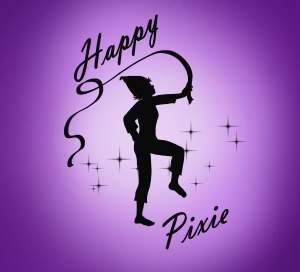I have chosen two simple images to demonstrate with below. I am purposefully keeping this is as simple as possible for the complete beginner to pyrography. It is not meant to be a comprehensive guide. The most important thing to remember is to have fun experimenting with what your tool can do and practice until you feel happy with the marks that you make. This is a craft that takes a long time to master, but with practice, fantastic results can be achieved to produce beautiful pieces of art.
Make sure the area that you are going to work in has sufficient light, is clear from clutter and any flammable materials. There should also be good ventilation as the burning wood tends to smell a bit. Always try to use materials that haven't been treated with chemicals or preservatives as these can give off nasty fumes when you burn them that may be harmful to you. Even then, you should always ventilate the area. It's better to be safe than sorry!
Start with your chosen image drawn or traced onto the material that you are going to burn onto. I have used wood here and you can see how I transferred the images by following this link.

Begin by burning the outline of your image using a writing nib, aiming to keep the lines even. I will talk about the techniques of burning using different nibs on another page.


Trace over the writing too, taking care to keep your pen strokes even so the wood doesn't burn for too long in one place, causing a spot!

Your project is then ready to either shade (I added minimal shading to the butterfly above) or simply leave as an outline, depending on your preference. The wood can then be treated with a preservative or finish such as varnish or beeswax.
Below I have demonstrated burning a fish design using my old pyrography burner.
Begin by tracing over the outline of your image using a writing nib.


Once the outline is done then you can add some shading if you choose too. Again, this takes a lot of practice to get the effect that you want. It's not the best idea if your wood has too heavy a grain. If you choose to go ahead and are only using a writing nib then the best technique I have found is to lightly brush the tool backwards and forwards where you want the shading to go as if you are shading with a pencil on a drawing. Keep the motion as light as possible. The tone will become darker with repeated strokes as with a pencil. Try it out on a scrap piece of wood first until you are comfortable with it so that you don't spoil your picture.

Below I have written freehand onto the other side of the wooden keyring.

You can burn this too!


The ring can be attached to your wood and the keyring is finished!

